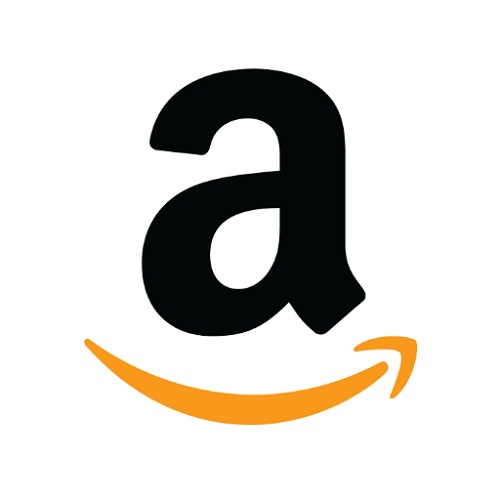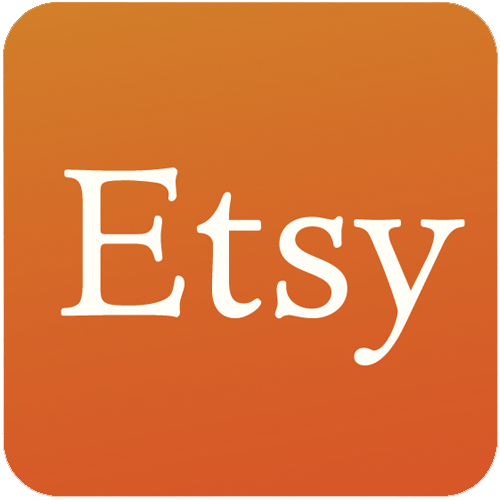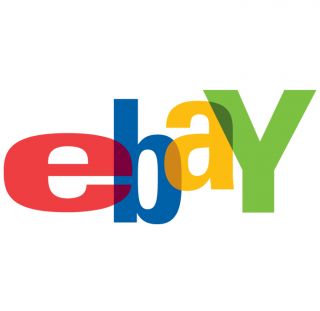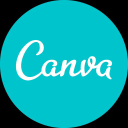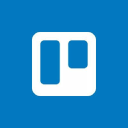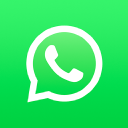On Launching An App To Discover Beauty And Wellness Professionals
Hello! Who are you and what business did you start?
My name is Mandana Salehi-Stewart. I live in Portland, Oregon where I built a career as a sales leader in local software startups for more than 10-years before venturing off on my own. My company is called ZibaHub, a marketplace where beauty and wellness professionals can be discovered by potential employers and clients based on their skills and social values.
ZibaHub is built around the beauty professional. Our goal has always been to empower salon workers with the same tech-enabled career tools that other professionals like myself have been using to bolster their careers for over a decade. In designing the platform, we looked to existing sources like LinkedIn and Yelp for elements of inspiration while remaining true to our own core values around inclusivity and the creative nature of our audience.
With the changes happening over the past year about both Covid and social awakening, we decided to help connect the dots between consumers seeking beauty services who are concerned about safety protocols and social values and service providers who need new business to weather the storm. This is why we’ve evolved from a marketplace where salons discovered salon pros to an all-encompassing marketplace where both salons AND consumers can discover and connect with their ideal providers.

What's your backstory and how did you come up with the idea?
I was born in Iran at the onset of the Islamic revolution in 1979. The first eight years of my life were spent in a turbulent environment as ground war raged between Iran and Iraq. Some of my earliest childhood memories involve standing in line at the market with my mom for rations of milk and retrieving to the fallout shelter below our home during air raids in the dark of night.
My father was a pilot in the Iranian military and often away on assignment in extremely dangerous conditions and my 12-year-old brother was at a pivotal age where boys began pseudo-military training and received plastic ‘keys to heaven’ in preparation for martyrdom. It was around that time that my mother started cosmetology school and opened a private hair salon in my brother’s old bedroom in our condo and began chopping mean mullets and “Oribe '' cuts for the neighborhood women. It would be years later that I would learn that my mom’s motives for learning the trade had little to do with her passion for hair and more to do with her wanting to acquire a universally recognized skill-set in preparation for our immigration journey that would empower her to provide for our family regardless of where we landed.
We arrived in Portland, Oregon in December of 1987, and over the next 3 decades as I finished school and eventually found my way to a career in tech as a sales leader, I watched my mom, a licensed esthetician, struggle with basic career tools like finding a viable space to lease to provide her services or maintaining her clientele after the relocation. It always seemed strange to me that there was no central database where beauty professionals maintained digital profiles and could browse career opportunities like me and my peers did on LinkedIn so in 2019 I decided to create it myself.
The beauty industry is unique in that about half of all beauty professionals are independent contractors, like my mom, renting a space in which they provide services. The other half are either hourly employees or commission employees, which is a whole other anomaly often involving questionable practices. This is why traditional job boards that list only employment opportunities and have filters for minimum desired pay don’t work for someone like my mom who is more interested in knowing how much the rent costs if there are long-term contracts, and what amenities are included in the price of rent. These are all issues we’ve addressed in the Ziba app to make career searches less tedious and more tailored to our users.
The other thing that makes our industry unique, and is a driving factor for me, is that it is staffed by a 90% women workforce and is extremely diverse.

Take us through the process of designing, prototyping, and manufacturing your first product.
Although I came from the world of software startups, I had never been a founder before and I didn’t have a background in product design or development; I just had an idea.
When I first dreamt up the vision for the Ziba app, I envisioned a LinkedIn-like profile page but with a more lively interface more specific to the beauty industry a visual portfolio of work samples. I then envisioned the job board having two dimensions or tabs. One with traditional filters for job seekers such as location, base pay, expertise, etc., and one that would look more like a Zillow search, for independent contractors, with the ability to search by location, lease price, lease terms, and amenities.
I took my idea, sketched in a notebook, to an industry expert who validated both the need for this type of product in the market as well as the direction of the vision. She even agreed to join me as a partner and advisor, which was an amazing benefit.
I knew that tech products cost money and required some degree of funding from friends and family and eventually angels and VCs and I also knew that for a B2B2C marketplace type of product, nobody would fund me with the sketches in my notebook so I hired a freelance designer to create a life-like click-through prototype of what my product would look like for about $3,000 and gave us a tangible product to show investors but more importantly, it served as a blueprint for the developers who built our MVP.
This brings me to the next part of the journey: how to build a mobile app if you are not a technical founder. There are a few options, it turns out, including finding a technical co-founder who can code, hiring an FTE who is a coder, or hiring a third-party development team. With that last option, you can also choose to hire domestically or to outsource overseas. While all of these options carry pros and cons, much of the decision-making is often dictated by urgency and budget.
I didn’t want to wait and rely on one person (co-founder or FTE) to design, create, and test an entire product. There was too much risk involved in that scenario; what if they got hit by a bus, got bored of the project, and quit, or didn’t perform up to my standards? It seemed like a more viable option to hire a third-party development team so I could a team of designers, developers, and QA professionals who can work together to quickly develop the app and the company would ultimately be accountable and responsible for replacing any missing or rogue staff.
For those reasons I decided to hire a dev team and since I did not have the budget to hire a local company, I hired a team overseas to build my MVP. At the same time, I raised small friends and family round for $100K which helped to pay for legal fees for registering the company as a C-Corp and setting up the convertible note via which the money was raised as well as allocating equity to co-founders and rest of the team and of course, paying for the development fees.
The MVP process was not easy and as with all things software-related, nothing went according to plan. In fact, we came in over budget and about 12 full months behind schedule. It was during this time that I’d been putting my story and the company out there through pitch competitions and interviews and I gained a couple of competitors who not only copied our model and messaging but also beat us to market!
With all of that being said, I am not sure I would do anything differently if I could travel back in time, and I’m thankful for the lessons learned along the way.
The MVP did what it was supposed to do; it helped to validate the market that we knew was there and it gave us the confidence to move forward with a full product build.
Being that the MVP was poorly executed, we didn’t have the option to build on the existing technology so we had to start over with a whole new team and raise more money to keep going.
Hot on the heels of excellent market validation, winning the Pitch Oregon 2019 competition, and having a handful of investors in due diligence to fund our next round, we were pumped, optimistic, ⅓ of the way to our goal, and then Covid happened.


Describe the process of launching the business.
For our MVP we decided to do a local beta here in Portland where we could lean into our network and connections for organic growth and because we figured this would be the most forgiving of markets where we could fall on our face with a rickety old MVP and learn from our mistakes.
We also had acquired another company earlier in the process with a local list of 65 past clients. That company was called ParloGig and it was the brainchild of a salon owner and stylist, Jenna Knox, who created a basic digital job board where employers could post salon jobs. After working on the project for several months, Jenna decided that her passion was in working on the creative side with running her salon and serving her guests but she didn’t want to see all of her efforts go to waste so she passed the torch to us and remains a friend and supporter.
Before rolling out the MVP, we assembled a solid team of ambassadors; local industry insiders with unique points of view, and their own extended networks. We held a small launch party at Freeland Spirits, a woman-owned distillery in town with exceptional cocktails and a beautiful spread of finger foods.
Space could only hold 60-something occupants so we kept the guest list tight and the raffle prizes substantial. We introduced the attendees to the Ziba app, the concept, the vision, and ultimately asked them to download the app and tell at least 3 friends about it. We hoped that we would end up with about 300 beta users and we could use their behavior and feedback to map out what success would look like for our product.
We were pleasantly surprised when a few months later we ended up with over 1,000 users and job postings as far north as Seattle, all through word of mouth.
The user count overwhelmed our fragile MVP and forced us to rush to build a more stable and sustainable version. It was a stressful time but in hindsight, it was a great problem to have as a startup.
Since launch, what has worked to attract and retain customers?
ZibaHub is a love letter to my mom, and to all of the other hardworking people who keep the rest of us looking and feeling our best. Somehow as hard as they work, cosmetologists don’t always receive the respect they deserve as professionals. This was evident by the fact that the world's largest employment marketplace, LinkedIn, didn’t even recognize the industry in the top 50 industries they serve. With that as the focal point of our mission, our focus has always been to empower this community and level the playing field so that they can have more control over their careers, finances, and futures.
In our first year, we sponsored a Cuts for Kids event around the holidays where volunteer stylists, barbers, and natural hair practitioners provided free services to kids under 18, followed by professional holiday photos.

When Covid swept through healthcare facilities, depleting supplies of masks, gloves, and disinfecting materials, we held a donation challenge that resulted in nearly 20,000 pieces of PPE changing hands between beauty professionals who were out of work indefinitely to healthcare workers who desperately needed them for survival. As a result, we were able to reward 3 participants with $1,000 each through a random drawing from funds we donated and crowdsourced for the challenge.

Also as the pandemic kept personal care businesses closed without an end in sight, and with unemployment checks running weeks behind schedule, we immediately stopped all marketing spend and reallocated every dollar into 2 random weekly drawings for $100 each for our user base. $100 may seem insignificant to some but for an industry where the average annual income is just $25K, a sudden loss of income can result in catastrophic outcomes so our gesture was met with great enthusiasm and many heartfelt notes of gratitude.
These practices, though seemingly unrelated to our business model and highly unconventional, helped solidify our standing amongst the community as an authentic brand, worthy of their trust and loyalty.
Though no jobs were being posted for many months and we were still operating on our extremely unstable MVP, our user base continued growing and the majority of those users followed us onto the new app when it was released earlier this year.
Of course, we are not always relying on charity for exposure. In 2019 we helped Nike round up 9 talented stylists and barbers to provide services at the Just Do It day event for employees. Recruiting for the event gave us a huge boost with users who wanted to seize the opportunity to add Nike to their portfolio of events gigs.

We also sponsored professional headshots at the Barber and Sneaker Battle as well as the Oregon Esthetics Show to provide our users with high-quality, professional images that could be used on their Ziba profiles and beyond.
These are all examples of different events but the common core between all of these projects was a focus on community and an authentic interest in improving the lives of industry professionals through career enablement measures.
How are you doing today and what does the future look like?
We just launched the new Ziba app with a slight pivot to include customer access. Whereas the previous version of the app was made for beauty professionals and the businesses that employ them, this new version also includes customers who want to discover and book beauty services with our users.
The past year changed the world in many ways. Consumers want to feel safe in a holistic sense; that means they are curious about Covid-related protocols but they also want to know who they are spending their time and money with within an intimate one-on-one setting that usually lasts over an hour.
We introduced the concept of Inclusion Badges in our MVP, which are optional symbols that can be displayed on a user profile to signal mastery of skills such as protective styles and textured (coily) hair, or solidarity with social causes such as BLM, LGBTQ+, or gender-affirming, and finally accommodation of unique needs such as HIjab Safe. We enhanced this concept by allowing consumers to search for providers and salons using the Inclusion Badges in conjunction with other filters for specific services, skills, and brand affiliations and we are now empowering users to self-identify as BIPOC on their profiles and explicitly state their Covid-related provisions so consumers can book services with increased confidence.
There is a lot we want to do, like to expand beyond Portland but these plans require a larger budget than we currently have with the obstacles we’ve overcome in recent months so we are exploring creative ways to keep moving forward and we draw inspiration from our industry that has been amongst the hardest hit by the pandemic. As long as they keep going, we will be right beside them!

Through starting the business, have you learned anything particularly helpful or advantageous?
There are things I could have done differently along this journey. I could have avoided certain relationships that ended up doing more harm than good. I could have trusted fewer people and listened to fewer voices. I could have trusted myself more and called out blatantly racist and sexist interactions by people in power instead of biting my tongue to preserve the possibility of future transactions that will never materialize. But I don’t regret any of my decisions.
I’ve learned a lot and I will do some things differently moving forward but I don’t believe in looking back. So the next time someone tells me not to use my last name in a pitch because my first name is “hard enough and the last name just makes it more distracting,” I’ll stand up and use my whole mouth to enunciate my full given name and pause to ensure everyone heard me.
The next time someone says: “So you’re a hairdresser... Do you have any experience in tech?” I won’t smile and apologize for not being more clear about my background at the onset of the presentation. I will ask them why they assume I’m a hairstylist after I explained that my background was in tech startups and I had built this product in response to my mother’s struggles as an esthetician.
Or when someone asks why I “built a professional network for people who aren’t professionals,” I will challenge them to name one other industry where people are required to go to school, take out student loans, pass written and practical exams to get licenses that are only valid in the issuing state, and when they can’t answer the question I will start a dialogue about why most women-dominated industries tend to be seen as less valuable and less worthy of professional treatment than others.
What platform/tools do you use for your business?
We use standard business tools for our day-to-day operations. I often wonder how anyone ever functioned without Slack. We also use Canva, and a slew of project management and ticketing tools. Our biggest marketing resource is Instagram.
What have been the most influential books, podcasts, or other resources?
There are two books I cannot recommend enough. One will make you cry because it’s so boring but necessary and the other will make you cry because the story feels so familiar and as a startup founder, it’s easy to forget that your struggles are not unique.
First the most important book for all startup founders, particularly those who have any ambition of raising money at any point. Venture Deals by Brad Feld and Jason Mendelson. It’s probably cliche to recommend this book but when I first started working in legal technology (e-discovery) with little experience in legal or technology, I read the entire Glossary published by the Sedona Conference.
It was not a pleasurable read but it helped me get my bearings and I went back to it regularly over the next decade as it continued to evolve. Venture Deals was the equivalent of that for me. It was the basic stuff that I needed to know but wouldn’t have known to ask. So although I quip that it bored me to tears, I believe it should be required reading for any founder even thinking about getting into the startup game.
My second recommendation is a pleasure read for masochists. If you enjoy shows like This is Us because you crave the catharsis of a good cry each week, then What It Takes: How I built a $100 Million Business Against the Odds by Raegan Moya-Jones is a must-read/listen on Audibles. This was the book that made me feel more paranoid, less alone and fired up to stay the course.
Unpopular opinion: I don’t love podcasts. Other than This American Life, which is unrelated to my line of work but just a gift from Ira Glass, I am not that person who devours hours of people talking about things that stress me out. That being said, I found great inspiration in a particular episode of How I Built This with Jane Wurwand, founder of Dermalogica.
The only other podcast I listen to is called My Hairapy Session with Emily, hosted by Emily Mazour, AKA @portlandhairstylist on Instagram. I met Emily when she was first kicking around the idea of starting a podcast to showcase local beauty professionals and tell their origin stories and I loved the idea so much I decided to sponsor the show! So full disclosure: My Hairapy Session with Emily is sponsored by ZibaHub and regardless of your background or line of work, I highly recommend the series. Particularly episodes 1 and 8!
Advice for other entrepreneurs who want to get started or are just starting?
Do it. Don’t wait for the right time. If you want it badly enough, get out of your own way and make it happen. Then don’t stop. Close your ears, put your blinders on and charge! But- only do it if the motivation is something outside of yourself. If your motivation is selfish in any way, the hard moments, of which there are many, will break you. If your motivation is something outside of yourself, a bigger cause, a greater good, then the hard times, of which there will be many, will be hard and they will drain you but you will survive because your tank will get filled by that exterior source and you will find the strength to keep going, for you AND them.
In my case, my most obvious motivation is my mom, and as an older founder (I’m 41) with a mom who is in her sixties, I am racing a clock so the only option is to keep moving forward.
Where can we go to learn more?
- Linkedin (Personal)
If you have any questions or comments, drop a comment below!

Download the report and join our email newsletter packed with business ideas and money-making opportunities, backed by real-life case studies.

Download the report and join our email newsletter packed with business ideas and money-making opportunities, backed by real-life case studies.

Download the report and join our email newsletter packed with business ideas and money-making opportunities, backed by real-life case studies.

Download the report and join our email newsletter packed with business ideas and money-making opportunities, backed by real-life case studies.

Download the report and join our email newsletter packed with business ideas and money-making opportunities, backed by real-life case studies.

Download the report and join our email newsletter packed with business ideas and money-making opportunities, backed by real-life case studies.

Download the report and join our email newsletter packed with business ideas and money-making opportunities, backed by real-life case studies.

Download the report and join our email newsletter packed with business ideas and money-making opportunities, backed by real-life case studies.
